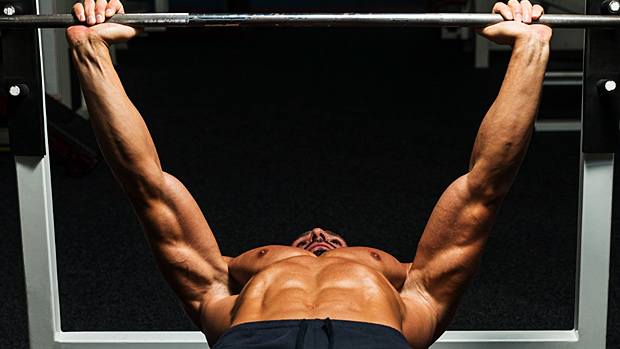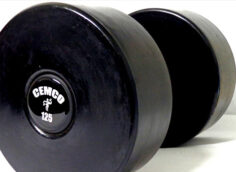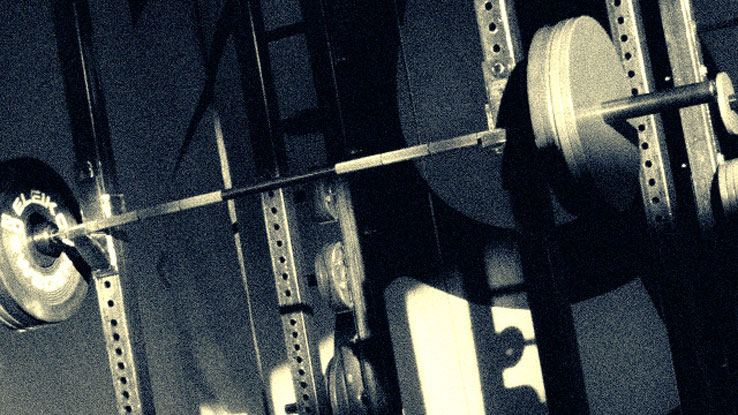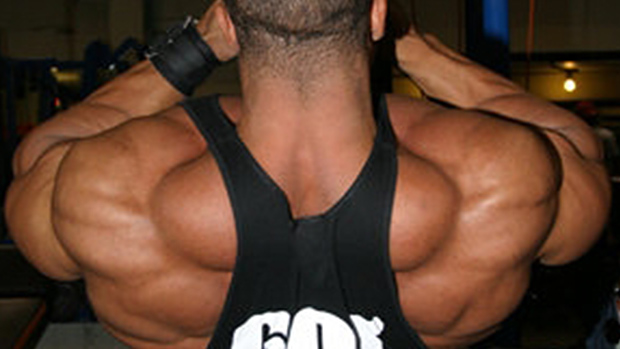It's interesting, ask a strength coach what a good bench press is for a 200 pound male and chances are you'll get a reasonable answer. Maybe everyone won't be in agreement, but surely they'll all have an opinion.
Now, try asking a reputable strength coach what constitutes superior single-leg strength or first-class vertical pulling strength. Good luck finding the same level of agreement, if you get an answer at all. It might seem like you just asked a youngster about foreign trade. "Say what?"
Last spring and summer, I set out on a mission to answer both questions. What are the limits of single-leg and upper back strength? If you're going to train, you need a goal. If we're going to train for strength, we need to know what strong actually is.

The four-minute mile is a great example of breaking down athletic barriers. In 1957, Roger Bannister became the first to run a mile in under four minutes. On that day, he broke a twelve-year old record. By the end of 1957, sixteen other runners had added their names to the list. It's amazing what someone will do once they've seen what's possible.
My goal is to raise the bar on both single-leg strength and upper back strength by telling the strength and conditioning world exactly what's strong.
Getting Stronger One Leg At a Time
I've written extensively about single-leg strength in my books and articles. When I wrote Functional Training for Sports in 2004, I thought it was great that I had athletes who could do a one-leg squat. I was an early proponent of unilateral training and pushed both my male and female athletes to be able to perform this feat.
However, in 2007 my thoughts began to change. I noticed a sense of complacency among my athletes. They were just like me. They were happy that they could do a one-leg squat with some level of external resistance. Some were actually getting pretty strong, routinely using 20 to 25 pound dumbbells. Initially, I thought this was great. However, we quickly became stagnant.
Part of the problem was that over time, the dumbbells became too heavy to properly lift into position, and the weight vests we used at the time only went up to a whopping 20 pounds. This meant that the top weight we were comfortably able to add was about 60 pounds.

The other problem was that we encountered the same issue many coaches encounter in two-leg squats. As the load increased, the depth decreased. To solve the loading problem, we purchased X-Vests. X-Vests can, in theory, be loaded up to 80 pounds. We made up 40 and 50 pound vests.
To solve the depth problem, we began to use the same method we used to insure depth on our two-leg front squats. We placed a box behind the athlete and asked them to touch it. The only difference is that they're now standing on one leg. Now we could dictate depth and increase the load. Sounds like a prescription for success. We were half right.

The "pistol type" one-leg squat
The "pistol type" version we used initially caused low-back pain in some athletes, particularly those with long femurs. We solved that by using two boxes – one to stand on and one to squat to.
You've Trained, Now It's Test Time
The next thing we had to do was to actually test our athletes. Testing isn't the same as training. In test situations, athletes compete. I found the results rather surprising.
Jay Pandolfo, assistant captain for the New Jersey Devils, did 95 pounds for 11 reps on each leg. Our Boston University hockey captain did 110 pounds (a 50 pound vest with 30 pound dumbbells) for 5 reps on each leg. The average for our hockey team was 80 pounds for 5 reps.
Now when someone asks me to give them a parameter for single-leg strength, I can tell them that 80 pounds for 5 reps is good for a one-leg squat. Excellent would be 5 reps with 110 pounds.
The same situation applies to upper back strength and chin-ups. If someone asks me what's "strong" for a male, I say 135 pounds for 3 reps.
If someone asks me about female athletes, I reply with 45 pounds for 3 reps.
The Strength Chart
The following is a chart of what constitutes "strong" in some basic exercises for drug-free adult males:
- Bench Press: 1.25 to 1.5 x bodyweight (250 to 300 pounds for a 200 pound athlete)
- Clean: 1.25 to 1.5 x bodyweight (same as above)
- Front Squat: 1.5 to 1.75 x bodyweight (300 to 350 pounds for a 200 pound athlete)
- One-Leg Squat: 0.5 x bodyweight for 5 reps
- Chin-Up: 0.5 x bodyweight for a single rep
Ideally, athletes should have the same, or similar, bench press and clean numbers. If you don't have this relationship, your athletes are spending too much time benching and not enough time on power movements.

I also like to see the total weight for a chin-up (external load plus bodyweight) be greater than or equal to their bench press one-rep max (1RM). In other words, a 280 pound bench presser who weighs 180 pounds should be able to do a chin-up with 100 pounds.
Dealing With the Relatives
Another area in which we evaluate strength is by comparing related exercises. It's amazing how many "groove lifters" or specialists you run into. Strength isn't about how much you can do in a particular lift that you specialize in, but rather the ability to reflect that strength at numerous angles.
With this in mind, we developed the following relationships. Please note that this is in many ways old-fashioned trial and error, developed over the last decade.
- Bench Press = 100% (using an example of a 300 pound 1RM)
- Incline Bench Press = 80% of bench press (or a 240 pound 1RM)
- Dumbbell Overhead Press = 40 to 50% of bench press (or a pair of 60 to 75 pound dumbbells)
Overhead pressing really is a lost art. It's startling to see the disparity in overhead pressing strength as it relates to bench press strength. Most trainees are capable of much more in the overhead press, yet no one does it anymore! With my athletes, this has been a prominent area of emphasis over the last year.

We also use the following formula for any dumbbell variations:
- Dumbbell weight = 80% of bar weight divided in half
So, continuing with the 300 pound bench press example:
- 80% (or a 6 to 7RM) would be 240 pounds
A dumbbell bench press 6RM would be 80% of 240 pounds divided in half, or 95 pounds.
In other words, a 300 pound bench presser should be able to dumbbell bench press 95 pound dumbbells 6 times.
For the incline bench press, we again use our 80% rule. So to determine a dumbbell incline bench press 6RM for a 300 pound bench presser, we take 50% of the 1RM divided in half, or 75 pounds. Another method is to simply take 80% of the flat dumbbell bench press weight.
Our theoretical 300 pound bencher should be able to dumbbell bench press 95 pounds for 6 reps. He should also be capable of a dumbbell incline bench press of 75 pounds for 6 reps. If we continue the trend and take 80% of 75 pounds, he should also be lifting 60 pound dumbbells in the overhead press, as indicated above.
The overhead press is where things typically fall off. Most athletes in this day and age need a lot of work on overhead movements. Watch most athletes overhead press. They'll make a concerted effort to turn any overhead exercise into an incline press. This allows the clavicular head of the pectorals to take over for the deltoids in the pressing action.
We've actually begun to utilize seated dumbbell overhead presses to control hip motion better in our beginners. We progress from seated, to half-kneeling, to standing to force athletes to learn to use the shoulders versus the chest.
One tip: If you want to develop shoulder strength, don't allow your athletes or clients to use a bench with a back. They can sit in place on one, but leaning back isn't an option. As soon as they lean back, they'll shift to a clavicular/pectoral version of an incline bench press.
Taking a Hard Line on Strength
Bottom line: For athletes, strength must exist on one-leg and must be demonstrated in more than just the bench press (sorry, Mr. Monday bencher).
The key is well-rounded strength, not an impressive performance on a "pet" lift. Whenever I have an athlete who arrives as a good bench presser, I immediately shift the focus to the hips and lower body.
I tell my athletes that if you're going to do bad at one of our test lifts, I hope it's the bench press. If you're going to be good at just one, let's hope it's the hang clean. I'll take hip power over prone strength any day!





